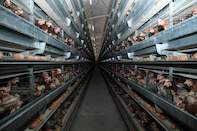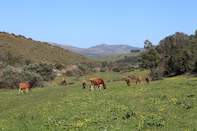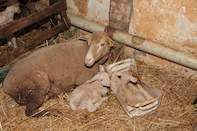Intensive production is defined as an agricultural practice where producers spend a lot of money, labour and time in comparison with the area being farmed. Output per hectare, in effect, is much higher than with farms where intensive production is practiced.

Production is mechanised and associated with higher inputs, such as fertiliser and pesticides. The farms tend to be smaller and more expensive than farms used for intensive production and are generally located closer to the market. Shade net and tunnel production are examples of extreme intensive crop production systems.
Animal husbandry in this system is characterised by high stocking densities as is the norm with poultry and pig production. Dairy production in the Swartland is a good example, with cows being kept in housing and fed premixed rations.
Extensive Production

Extensive production is practiced on vast areas of lands, such as in the Karoo where farmers will keep a thousand sheep or more over an area of one to a few thousand hectares.
The number of livestock kept, will depend on the carry capacity of the land because the aim is to buy as little feed in as possible. The carry capacity may be increased through the planting of pastures. Additional feed and supplements may be provided as necessary, depending on the time of production.
These farms are usually situated far from the market, with prices per hectare being generally lower than intensively produced farms depending on the location. Buying one of these farms is nevertheless still expensive, as you need many hectares to make a living from it.
Dairy production in the Southern Cape is an example of extensively produced dairy cattle, as the cows are raised on pastures. They receive additional feed while being milked.
The Mix

Farmers may often mix intensive and extensive production practices. Sheep and cattle, for example, may be raised under extensive conditions and then sold to a feedlot. Conditions in the feedlot will be highly intensive, with many of the same species of livestock from roughly the same age and weight being grouped together and intensively fed to finish them for the market.
Farmers may also move pregnant ewes to camps or housing to ease the management of these animals, protect them from predators and reduce mortalities. The ewes with their offspring will then be returned to small camps a few days later before being sent to larger areas.
It is important to note that one system is not superior to the other. Farming is a business, so farmers need to choose a system that will work best for them.